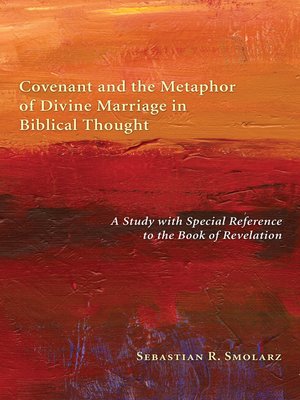Covenant and the Metaphor of Divine Marriage in Biblical Thought
ebook ∣ A Study with Special Reference to the Book of Revelation
By Sebastian R. Smolarz

Sign up to save your library
With an OverDrive account, you can save your favorite libraries for at-a-glance information about availability. Find out more about OverDrive accounts.
Find this title in Libby, the library reading app by OverDrive.



Search for a digital library with this title
Title found at these libraries:
| Library Name | Distance |
|---|---|
| Loading... |
In his commentary on Hosea, H. W. Wolff proposed that the divine marriage metaphor is the central metaphor of the entire OT. In Hebrew prophetic books, the metaphor reflected the covenantal relationship between Yahweh and his people. No other metaphor reached as deeply into the heart of this relationship or better described the tragedy of a broken relationship between Yahweh and his people. No other metaphor expressed more fully the abundance of God's grace shown in the promise of covenant restoration and renewal in the eschaton. In this volume, Polish Reformed academic Sebastian Smolarz demonstrates that the divine marriage metaphor is also one of the leading NT metaphors used to describe God's restored covenant relationship with his people, especially in the Book of Revelation.
Smolarz argues for continuity between OT and NT concepts and theologies in general, and for continuity between the Apocalypse and OT material in particular, showing that the Apocalypse has much in common with other parts of the NT. In doing so, he focuses on some Gospel parables and reads them against their OT background. He also examines instances of the divine marriage metaphor in Paul's theological reflections.
The focus of Smolarz' volume is a covenantal reading of the Apocalypse. He argues that the metaphor helps to establish the Apocalypse's Sitz im Leben, which he relates to the main conflict between the faithful and the unfaithful within the people of God in the first century CE. His work establishes that the Apocalypse contains not only explicit instances, but also implicit references and many echoes of this covenantal metaphor.







